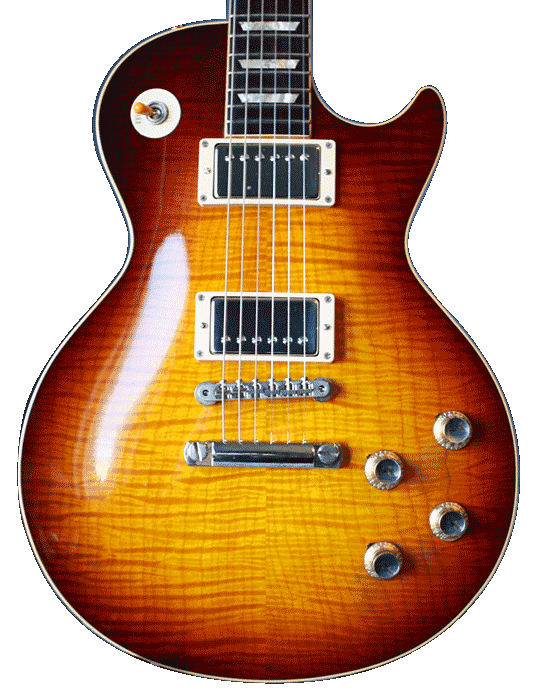
Today’s musical instrument department stores have an overwhelming assortment of strings for your Fender Stratocaster. Let’s face it, guitar players need to change strings, and there is a plethora of string brands, material compositions, and gauges (sizes).
We’ll have a look at strings for some of the reasons guitar players need and use them, and see if we can’t help wade through the sea of offerings and find some that will do your
Strat well.
Rock – Ernie Ball Super Slinky
Nothing works out a set of strings like an evening of pulse-quickening Rock, and Eddie Van Halen was a master of just that kind of night. Eddie used Ernie Ball strings, but the gauge, or size of strings, was a custom .009, .011, .015, .024, .032, .040.
If you want to channel your inner Eddie, a standard set of Ernie Ball Super Slinkys will do the job every night.
Nickel wound, smooth, reliable performance, and a not-bad price make them a great Rock set, as they have been for many decades now.
Pros
- Value for the price
- Solid Rock sound
- Available virtually everywhere
Cons
- Can feel flimsy
- Can corrode quickly
Metal – Fender Super Bullet
If you are of a mind to shred it like a metal maven, and leaning on that trem arm is your jam, there’s a set of strings for you.
Fender Super Bullets are purpose built with a smooth, tapered bullet billet where most strings have the traditional ball end. The ball end can, and does, get stuck up in there in the trem block, and these strings were made to alleviate that.
The same clear, massive, nickel plated sound that defines Fender strings, and you can wang bar the night away with solid performance that was designed for your playing style.
Pros
- Made for Trem use
- Good tuning stability
- Good durability
Cons
- Very bright sound
- Weak low end
Blues – Fender Original 150
Of the many things he was, Jimi Hendrix was a powerful Blues guitar player. The base set for him was Fender 150s, but they were quite different, gauged .010, .013, .015, .026, .032, .038. His techs were busy!
For us mere mortals, a standard set of Fender Original 150s will get us quite close to what Jimi used, without emptying our wallets. All-around rich tone with crisp highs and warm lows easily handles the needs of today’s Blues player, whether getting their Jimi on or not.
Pros
- Clarity
- Versatile
Cons
- Can feel stiff
Jazz/Fusion – GHS Boomers
With music that fuses styles and crosses all kinds of boundaries, David Gilmour has been dazzling guitar players and civilians alike for more than 50 years. Mr. Gilmour uses a custom set of GHS strings gauged .010, .012, .016, .028, .038, .048.
If you’d like your Stratocaster to nod to him, a standard set of GHS Boomers will get you there. With a crisp, clear snap and warm mids, you’ll have the clarity and tone that genre-defying music requires.
Pros
- Powerful sound
- Great bendability
- Strong mid tones
Cons
- Can feel too heavy
- Can feel rough
Country – D’Addario EXL120
If you are headed out to the honky-tonk circuit this weekend, pick up a set of D’Addario EXL120s. Their bright, tight tone and supple bendability lend themselves well to the twangy cut and double-stop wrangling the chicken pickers do so
Pros
- Soft feel
- Crisp sound
- Twangy!
Cons
- Not as long-lasting
- Too soft for some
Pop – Ernie Ball Regular Slinky
Inside of his melodic, chart topping, radio crushing songs, John Mayer is busy coaxing sweet, warm, mellow tones out of his Strats. Fortunately for the top 40 players among us, John uses the very same Erne Ball Regular Slinkys available to the rest of us. Great playability and overall round sound make them a great choice for those seeking the warm, mellow tones that John is so known for.
Pros
- Mellow tone
- Warm, big mids
- Good playing feel
Cons
- High E/B can break quickly
- Not as strong sounding
Old School – Darco
Some people just like Old School stuff. Others well remember Darco Funkys, and are no doubt happy to see these classics back again. CFMartin has returned them to the market, and as a long-ago Funky user I was not disappointed to try the rebooted Darco strings.
Well priced, long lasting, consistent great performance, same as they ever were.
Pros
- Strong overall sound
- Good price in bulk
Cons
- Tight feel
- Limited stock
Budget – Fender Super 250
If you are keeping costs to a minimum, and who isn’t, especially when it comes to a night out with the band, Fender Super 250s will come in a little below the rest, and every little bit counts.
Their lower cost is not at all reflected in their outstanding performance, reliability, tone, and playability. Solid Fender strings through and through, great for the budget conscious Stratocaster player, especially if you can score them in bulk.
Pros
- Price
- Smooth feel
- Bright, clear highs
Cons
- Can be hard to find
- Weaker mids
Long Lasting – D’Addario XS
If you don’t need or want to change strings that often, and you’ve got some recording to do, D’Addario XS are the ticket for you.
Coated strings have been a thing for quite some time now, their ultra-thin coating protects and preserves them for much longer life than regular strings, and that coating also serves as a lubricant, greatly reducing string noise for the recording guitar player.
With clear highs and powerful mids, these will have you sounding great for a long time between changes. Pricey yes, but well worth it!
Pros
- Very long lasting
- Very quiet
- No friction
Cons
- Expensive
- Coating can flake or peel
- Feel like they’re not there
Overall Best – Fender Original 150
For the giggers covering a wide variety of styles and genres in one night, Fender Original 150s have you covered.
Reliable, consistent performance night after night is a must, and these strings have your back. Clear tone, that Strat “bell”, great crunch, and powerful lows will keep your tunes authentic, from light pop to some down-home country to a bit of jazz to a heavy rock closer, these classics do it all, and they do it well.
In the interests of full disclosure, I’ve relied on them on all of my Fenders for decades.
Pros
- Clear tone
- Long life
- Solid, reliable performance
Cons
- High friction
- Stiff bending
Let’s Wrap This Up
The best strings for the Fender Stratocaster are, of course, up to the player. The best way to know for sure for yourself, and the best part of it all, is to try them, as many as you can!
A great place to start is with standard nickel plated strings. Priced well, nothing too fancy, and performance ready, nickel- plated strings are the most common, most popular string sets for good reason.
Guitar players refer to their strings by the size of the high E string. The .009s and .010s are the most used strings on Stratocasters. The new player should try both sizes and they will find out, in due time, which size is right for them.
Sure, there are lighter and heavier strings, and the only way to know is to try a few sets out for a good amount of time. Get a feel for how your Fender Stratocaster feels with a good variety of brands and sizes because, in the end, it is all about how it feels to play, and how it sounds.
Have fun figuring out what works for you!
Share your thoughts in our forum! 💬
Frequently Asked Questions
What kind of strings are best for Fender Stratocaster?
It very much depends on what you are doing with your Strat, but generally speaking, nickel plated .009s or .010s are the best starting point for determining what works best for you, your playing style, and the music you are playing. Like all things guitar, no one brand or gauge of strings is best for every player in some objective way.
What gauge strings do Strats ship with?
Most Fender Stratocasters ship out with Fender 250s gauged .009, .011, .016, .024, .032, .042. There are some that ship with Fender 250s gauged .010, .013, .017, .026, .036, .046, and Signature guitars usually wear the string gauge that the artist prefers.
How often should I restring my Stratocaster?
There are a few factors that can help determine this for each player, as it is quite personal, like all things strings. If you are rehearsing with the band once a week and out in the local night spots a few weekends a month, it makes sense to change them fairly frequently. The investment in clean fresh strings is worth the money you can make as a gigger.
If you play at home for your own enjoyment, you have less at stake, especially if you break a string, so you have fewer external reasons to change strings. The home player also isn’t making any money playing, so it also makes financial sense to get as much play time per set as you can.
Finally, some folks like fresh new strings and some like somewhat worn in strings. Both are valid, and both are perfectly good reasons to change or not change your strings. There is no concrete timetable for everyone, so try new ones, let them age a bit, see what you prefer!
Share this post with your friends using these one-click sharing options:
👉 Click here to share on Facebook.
👉 Click here to share on X.
👉 Click here to share on LinkedIn.

Get the latest reviews, guides and videos in your inbox.